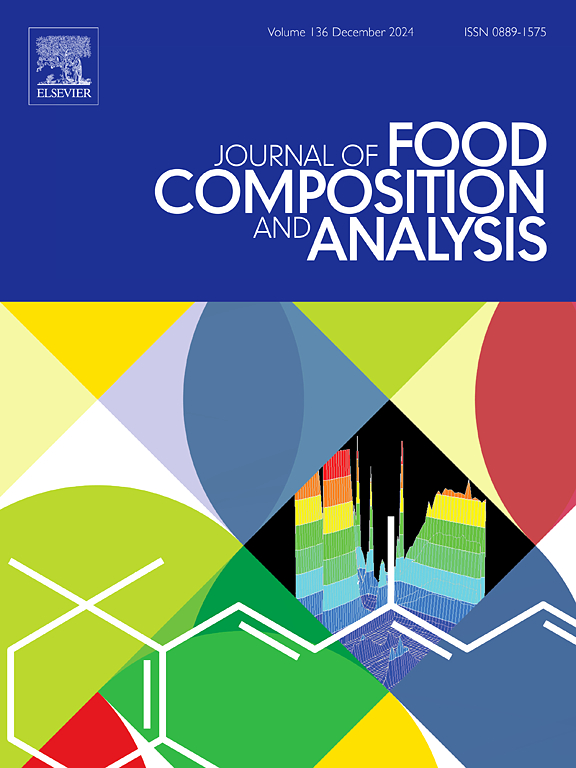Metabolomic profiling of novel muskmelon cultigens reveals regional variation in fruit composition across four U.S. growing locations
IF 4
2区 农林科学
Q2 CHEMISTRY, APPLIED
引用次数: 0
Abstract
Understanding the role of crop management, environmental conditions, and genotypes is critical for improving the yield and quality of agricultural products. Here, we evaluated the phytochemical compositions of eight newly developed muskmelon (Cucumis melo) cultigens grown at four locations (Texas, California, Arizona, and Indiana) in the United States. All the cultigens had total soluble solids contents higher than 10 °Brix, except for fruits grown in Indiana. The soluble sugars (glucose, fructose, and sucrose) among the samples averaged 22.6 %, 35.7 %, and 41.7 %, respectively. β-carotene was the prominent carotenoid, and its content ranged between 13.4 ± 1.1–37.6 ± 3.8 µg/g FW. Lower levels of colorless carotenoids phytoene and phytofluene were also quantified. The four most prominent amino acids were glutamine, glutamic acid, aspartic acid, and γ-aminobutyric acid, which were present in higher concentrations compared with other amino acids in all cultigens. A principal component analysis of studied quality attributes differentiated two muskmelon cultigens (TH1 and TH6) by growing location. This information will be important for researchers and breeders to develop better yield and quality of muskmelon.
求助全文
约1分钟内获得全文
求助全文
来源期刊

Journal of Food Composition and Analysis
工程技术-食品科技
CiteScore
6.20
自引率
11.60%
发文量
601
审稿时长
53 days
期刊介绍:
The Journal of Food Composition and Analysis publishes manuscripts on scientific aspects of data on the chemical composition of human foods, with particular emphasis on actual data on composition of foods; analytical methods; studies on the manipulation, storage, distribution and use of food composition data; and studies on the statistics, use and distribution of such data and data systems. The Journal''s basis is nutrient composition, with increasing emphasis on bioactive non-nutrient and anti-nutrient components. Papers must provide sufficient description of the food samples, analytical methods, quality control procedures and statistical treatments of the data to permit the end users of the food composition data to evaluate the appropriateness of such data in their projects.
The Journal does not publish papers on: microbiological compounds; sensory quality; aromatics/volatiles in food and wine; essential oils; organoleptic characteristics of food; physical properties; or clinical papers and pharmacology-related papers.
 求助内容:
求助内容: 应助结果提醒方式:
应助结果提醒方式:


